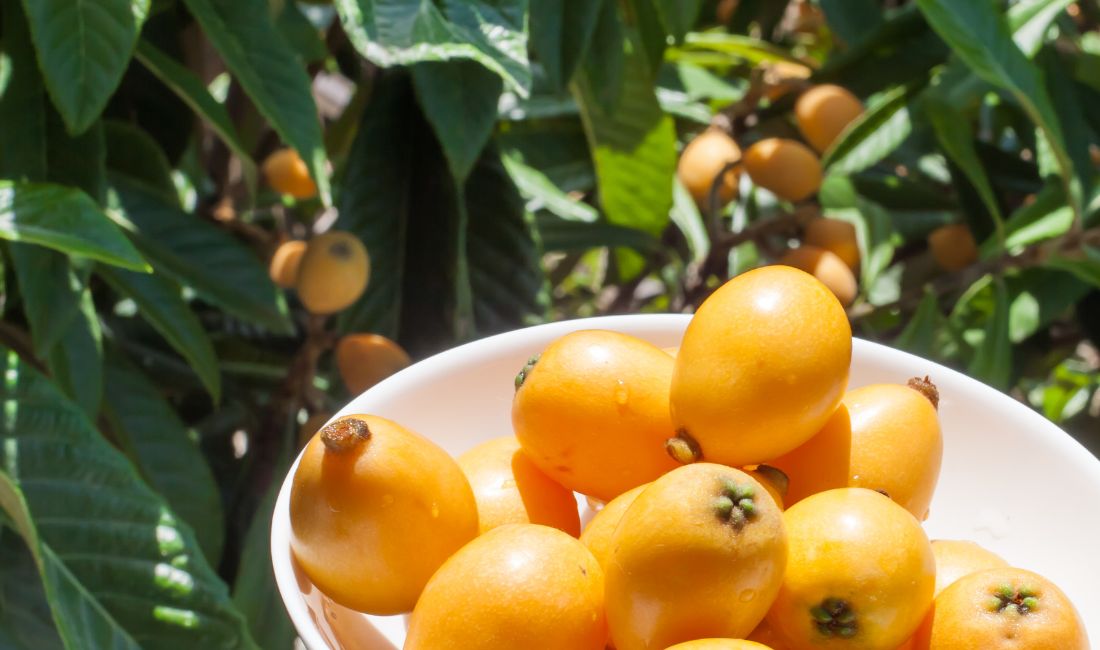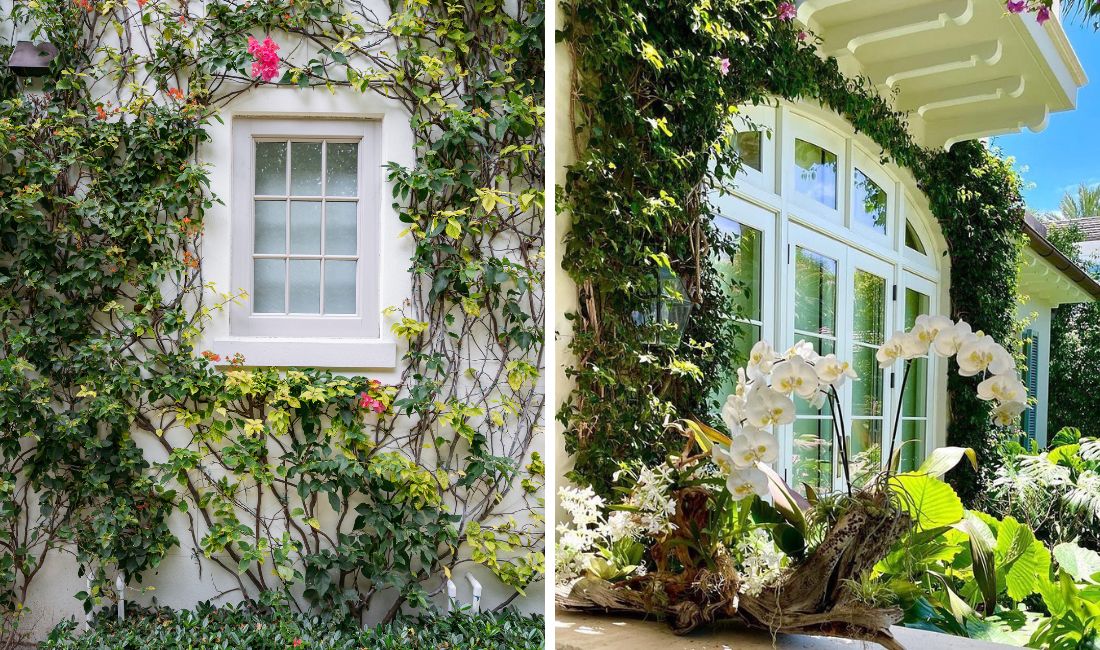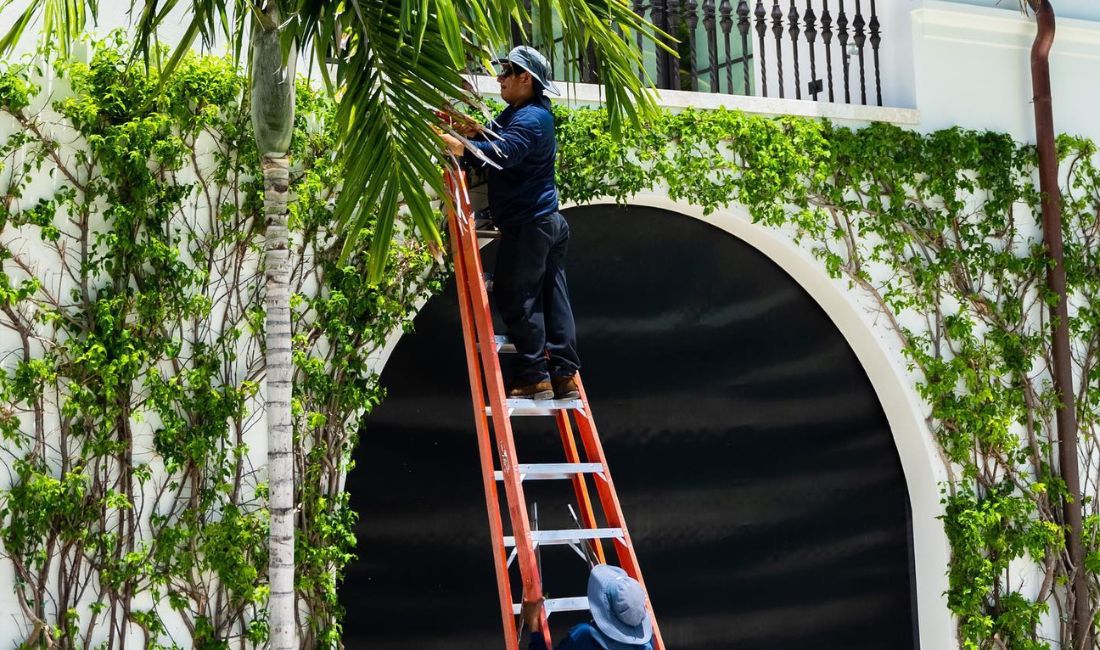If you have a small area but still want to plant a fruit tree on your Palm Beach property, or if you’re looking for an interesting and unique garden plant that looks like a sculpture, consider an espalier!
An espalier refers to any plant or tree trained to grow against a wall, trellis, or another flat surface. This method of pruning and shaping has been around since ancient Roman times.
Training a tree or plant into an espalier can be helpful to enhance a blank wall, can be a method for adding a tree to a smaller space on your property, or can be an attractive focal point of your yard or garden.
Keep reading to learn which trees and plants are best suited for espaliers, how to create an espalier on your property, various espalier designs to consider, and more!

Which Plants Can Be Trained into an Espalier?
Most woody plants, including vines, trees, or shrubs, can be trained into an espalier shape, but choosing plants with flexible branches is best. Often, a plant will be selected for an espalier that has flowers, attractive foliage, or fruit.
When you look into the history of espaliers, you’ll see that it was often used to grow fruit trees in smaller areas. In Europe, for example, espaliers were used to grow fruit trees along the castle courtyard walls.
Here in South Florida, you have several options. According to the University of Florida, you might consider one of the following for creating a formal espalier on your property:
- Citrus trees (any type)
- Sea grape (Coccoloba uvifera)
- Loquat (Eriobotrya japonica)
- Crapemyrtle (Lagerstroemia indica)
- Holly (Ilex spp.)
- Natal plum (Carissa macrocarpa)
- Gardenia (Gardenia jasminoides)
- Juniper (Juniperus spp.)
- Ligustrum (Ligustrum japonicum)
- Allamanda (Allamanda cathartica)
- Climbing or creeping fig (Ficus pumilia)
- Confederate jasmine (Trachelospermum jasminoides)
If you’re interested in creating an espalier on your Palm Beach property but aren’t sure which plant, tree, or vine would work, contact Coastal Gardens to schedule a consultation.

Espalier Shapes
One of the most interesting parts of espaliers is the different shapes that you can train them in. There are formal or informal patterns. Formal patterns are more geometric in design, while informal patterns have a more natural look and feel.
Formal espalier designs can include:
- Palmette or fan-shaped
- V-shaped
- Belgian fence – several V-shaped espaliers are planted two feet apart, and their branches trained to cross and form a fence
- Stepover
- Horizontal T or horizontal cordon
- Cordon
- And more
Note that not all plants or trees are suited for formal patterns, and formal designs need more pruning, care, and upkeep.

How to Determine Where an Espalier Would Work On Your Property
Anytime you plant something new on your property, keep the needs of the specific tree or plant in mind. Some need full sun, others shade. Some will not mind some salt spray; others won’t survive.
Most espaliers work best on the east- and south-facing walls to protect from cooler northern winds and to ensure they receive enough sunlight.
You’ll need to plant about 8 to 12 inches from the wall, so be sure you have the space available. You need to plant it at that distance to provide enough air circulation and to give roots room to grow.

How to Create an Espalier
You can buy plants from nurseries that have already been trained in espalier shapes.
In general, however, you will need a trellis or support on which the espalier will grow, a plan for what shape you want it to become, and lots of patience as you prune and shape the espalier shape.
If you have a specific formal espalier shape in mind, you will need to carefully bend and tie the branches into place. Prune out the branches that are not needed and maintain the espalier by pruning or tying new shoots as they grow.

Coastal Gardens Professionals Can Help You Plant, Train, and Maintain Espaliers
Many of the Palm Beach properties that Coastal Gardens Professionals maintain have espaliers.
If you want to add one to your property, contact us to learn how we can add this focal point to your yard or garden.
CALL US TODAY At 561-308-7604
Estate landscape Services
For Fine Properties in Palm Beach
With Coastal Gardens, you can rest easy knowing that your property is taken care of by a dedicated team of estate landscape professionals who truly care about creating and maintaining a dazzling outdoor space you can be proud of.
